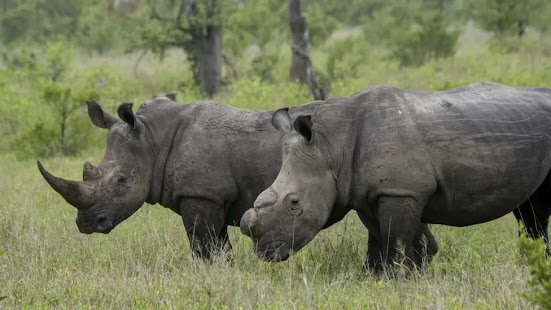Despite the encouraging news that rhino poaching rates have declined in recent years, illegal hunting still poses a significant threat to the survival of African rhinos. Between 2018 and last year, at least 2,707 rhinos were poached across the continent. While poaching rates in 2020 were lower due to Covid-19 lockdowns, some range states have reported an increase in poaching since travel restrictions were lifted.
The decline in poaching rates has also been uneven, with white rhino populations in Africa decreasing by almost 12 percent from 18,067 to 15,942 between 2018 and last year. In contrast, populations of the rarer, critically endangered black rhino increased by just over 12 percent, from 5,495 to 6,195 during the same period.
Image source: Wolfgang Kaehler/Getty Images
Overall, Africa's rhino population declined from an estimated 23,562 in 2018 to 22,137 at the end of 2021. Nine out of 10 poaching crimes were reported in South Africa, with white rhinos in Kruger National Park, home to the world's largest population of white rhino, being particularly vulnerable. The white rhino is currently classified as "vulnerable" on the IUCN Red List of Threatened Species. In contrast, black rhinos are classified as "critically endangered." Rhinos face a range of threats beyond poaching, including habitat loss, climate change, and disease. As large herbivores, they play a crucial role in maintaining healthy ecosystems, and their loss would have far-reaching consequences for other species and the environment as a whole.
To support the growth of rhino numbers and protect these iconic animals from extinction, it is essential to continue active population management and anti-poaching activities for all subspecies across different range states. This requires ongoing efforts from governments, conservation organizations, and individuals to address the underlying causes of poaching, such as poverty and the illegal wildlife trade. The report by the IUCN and Traffic will be discussed at the upcoming Convention on International Trade in Endangered Species of Wild Fauna and Flora (Cites) meeting in Panama in November. It is an opportunity for range states and the global community to come together to strengthen efforts to protect rhinos and other threatened species.


Σχόλια
Δημοσίευση σχολίου